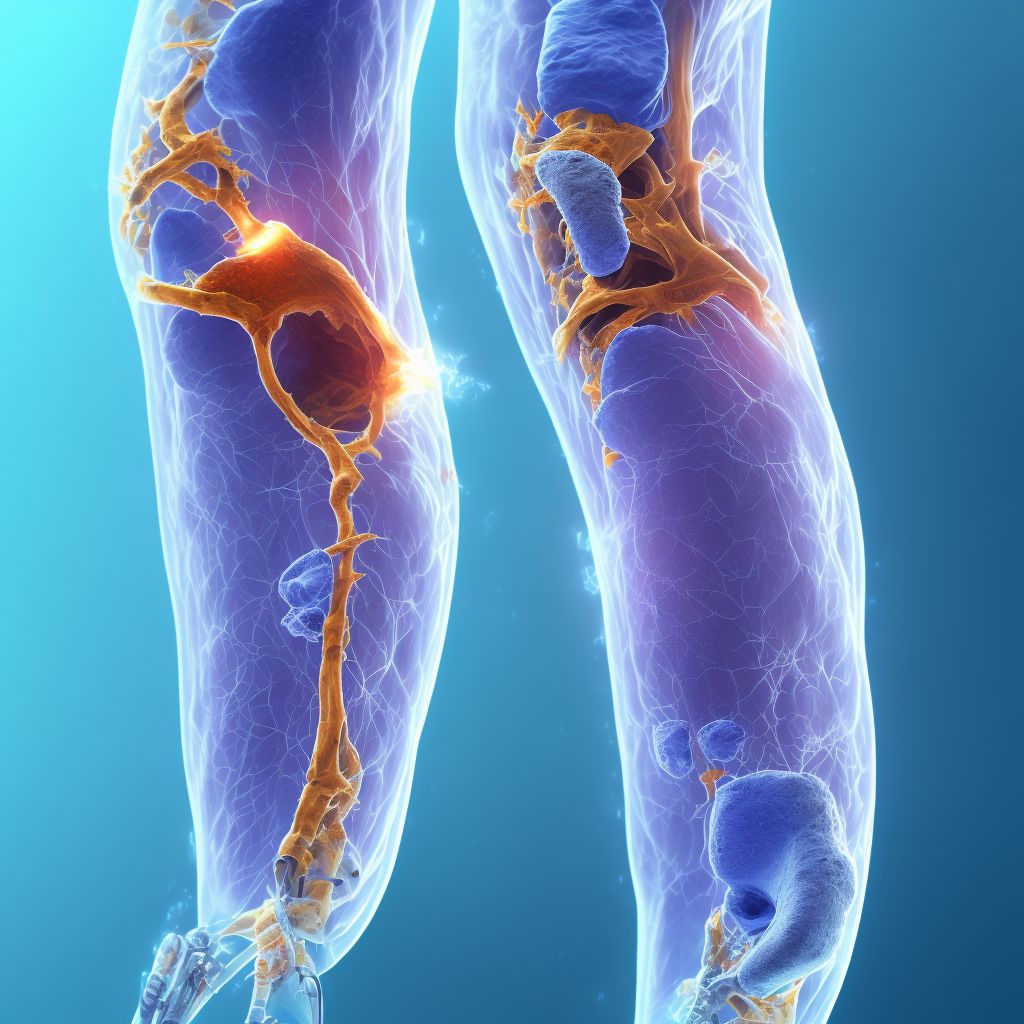
Displaced fracture of left tibial tuberosity, subsequent encounter for closed fracture with routine healing Save
ICD-10 code: S82.152D
Disease category: S82.152: Displaced fracture of left tibial tuberosity
Displaced Fracture of Left Tibial Tuberosity, Subsequent Encounter for Closed Fracture with Routine Healing
When it comes to bone injuries, a displaced fracture of the left tibial tuberosity is a common occurrence. This type of fracture involves the separation of the tibial tuberosity, a bony prominence located on the upper part of the shinbone (tibia). After initial treatment, patients often require subsequent encounters to monitor the healing process.
During the subsequent encounter for a closed fracture with routine healing, healthcare professionals primarily focus on assessing the progress and ensuring that the fracture is healing properly. This stage is crucial as it allows medical experts to determine the effectiveness of the initial treatment and make any necessary adjustments to optimize the healing process.
Patients undergoing a subsequent encounter for a displaced fracture of the left tibial tuberosity can expect a comprehensive evaluation to gauge the healing progress. This evaluation may involve a physical examination, X-rays, and/or other diagnostic tests to assess the alignment and stability of the fracture site.
Throughout the healing process, healthcare providers will closely monitor the patient's condition, paying attention to any signs of complications or delayed healing. By closely observing the fracture site, they can identify potential issues and take appropriate measures to prevent further complications.
- Regular follow-up appointments are scheduled to track the healing progress and ensure everything is on track.
- X-rays may be taken during subsequent encounters to assess the alignment and stability of the fracture.
- Physical examinations are performed to evaluate the patient's overall condition and the healing progress of the tibial tuberosity.
Patients should always follow their healthcare provider's recommendations and attend all scheduled subsequent encounters to ensure a smooth healing process. Adhering to the prescribed treatment plan, including any required rest, immobilization, or physical therapy, is crucial for a successful recovery.
In conclusion, a displaced fracture of the left tibial tuberosity requires subsequent encounters to monitor the healing process. These encounters involve a comprehensive evaluation, regular follow-up appointments, and diagnostic tests to assess the progress and ensure proper healing. By closely monitoring the patient, healthcare professionals can identify any complications and take appropriate actions to facilitate a successful recovery.
Treatment of Displaced fracture of left tibial tuberosity, subsequent encounter for closed fracture with routine healing:
Treatment Options for Displaced Fracture of Left Tibial Tuberosity, Subsequent Encounter for Closed Fracture with Routine Healing
A displaced fracture of the left tibial tuberosity can be a painful and debilitating injury. However, with proper treatment, patients can expect a successful recovery and return to their normal activities. In this article, we will explore some of the tre...
To see full information about treatment please Sign up or Log in